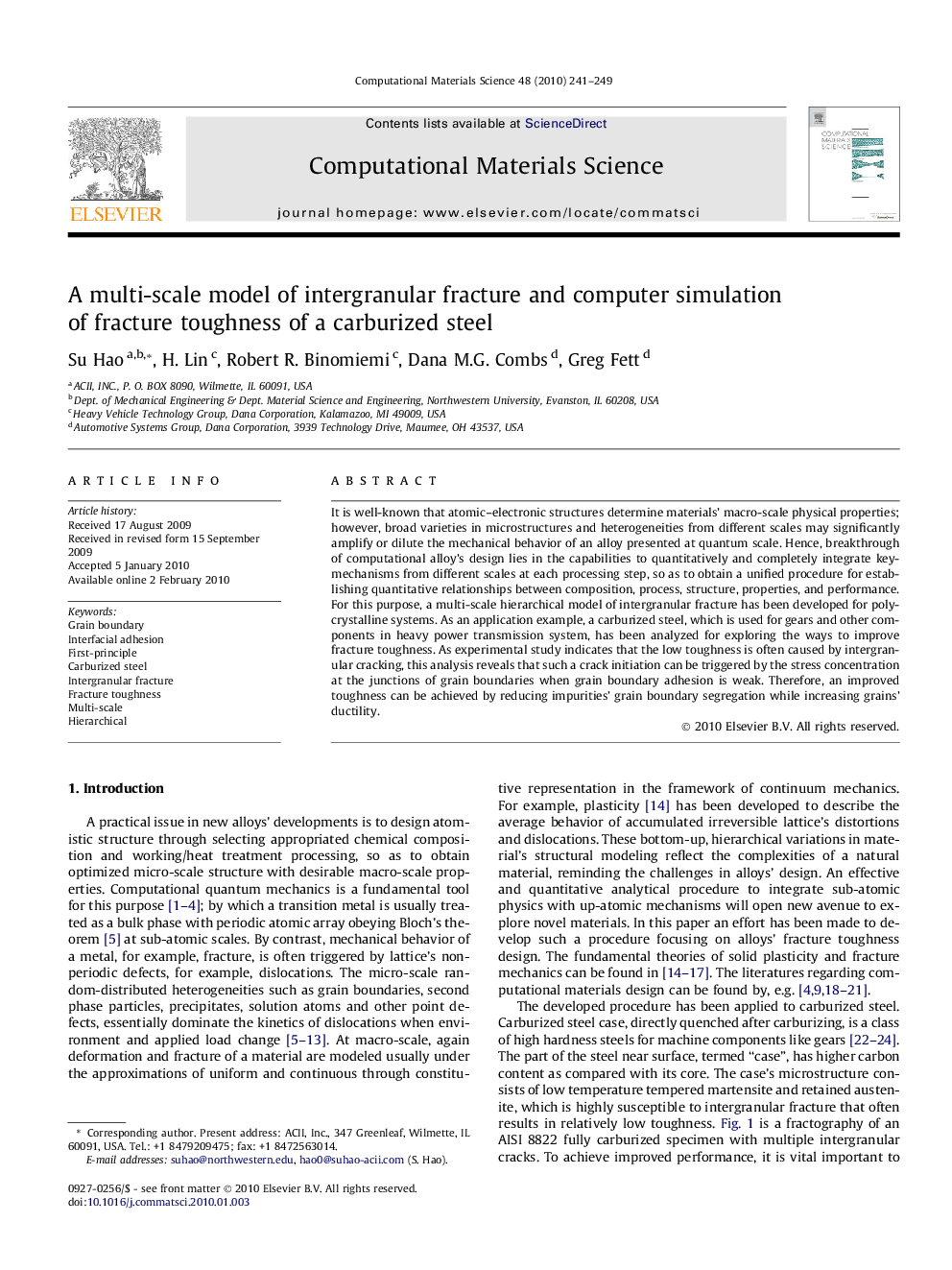| Article ID | Journal | Published Year | Pages | File Type |
|---|---|---|---|---|
| 1562708 | Computational Materials Science | 2010 | 9 Pages |
Abstract
It is well-known that atomic-electronic structures determine materials' macro-scale physical properties; however, broad varieties in microstructures and heterogeneities from different scales may significantly amplify or dilute the mechanical behavior of an alloy presented at quantum scale. Hence, breakthrough of computational alloy's design lies in the capabilities to quantitatively and completely integrate key-mechanisms from different scales at each processing step, so as to obtain a unified procedure for establishing quantitative relationships between composition, process, structure, properties, and performance. For this purpose, a multi-scale hierarchical model of intergranular fracture has been developed for polycrystalline systems. As an application example, a carburized steel, which is used for gears and other components in heavy power transmission system, has been analyzed for exploring the ways to improve fracture toughness. As experimental study indicates that the low toughness is often caused by intergranular cracking, this analysis reveals that such a crack initiation can be triggered by the stress concentration at the junctions of grain boundaries when grain boundary adhesion is weak. Therefore, an improved toughness can be achieved by reducing impurities' grain boundary segregation while increasing grains' ductility.
Keywords
Related Topics
Physical Sciences and Engineering
Engineering
Computational Mechanics
Authors
Su Hao, H. Lin, Robert R. Binomiemi, Dana M.G. Combs, Greg Fett,
